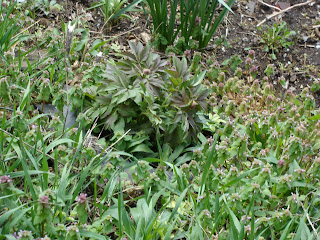The temperature is supposed to get up to 48 today. The night temps are still below freezing but they are saying we have seen the last of the snow. The are also calling for temperatures to get up into the 60's and maybe even low 70"s this weekend. I took a few pictures of some of the damage done by the late winter weather and I am surprised that some of the stuff I thought was lost is already making a come back.
Some of the dead leaves and buds on lilacs in front of my porch.
Knockout Roses are looking good.
This is in front of my porch where I am putting in new walk way.
Peony that was started from seed.
Lilacs on the side of the house look better than the front because they get full sun.
Thought I lost my crab apple blossoms, but they are doing ok now.
Another lilac
This is a reblooming lilac I started from a cutting. I thought Home Depot Killed it last year but it made a come back now it needs to come back again from freezing.
Peony buds look like they are doing alright.
Another peony
Arundo donax / Peppermint giant reed grass. This was looking really good before it snowed. I should come back ok though.
Another peony
Another lilac
Variegated weigela
Another crab apple tree.
My Pond
Butterfly bush
A small crab apple tree.
Two year old peony started by seed
Another 2 year old peony seedling.
Some of the Tulips the deer did not eat or dig up.
Montauk Daisy started by clippings left on ground over by church.
Another crab apple.
Same Crab apple
Peony and Poppy
Hemerocallis Day lily
Daffodil's
Bleeding harts
Beauty of Moscow Lilac
Cutting that I started about a month and a half ago.
White flowering dogwood.
Daffodil's
Damaged Montauk Daisy.
Peony
Butterfly
Montauk Daisy
Nikko Blue Hydrangea
It looks like the thistle I fell on last week made a recovery.






































































